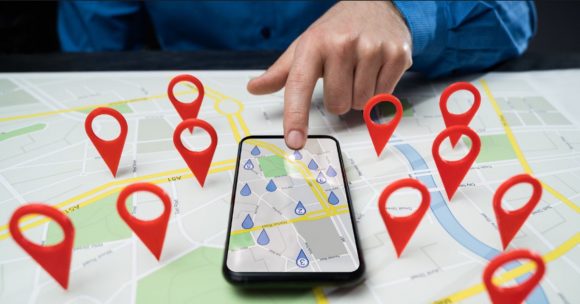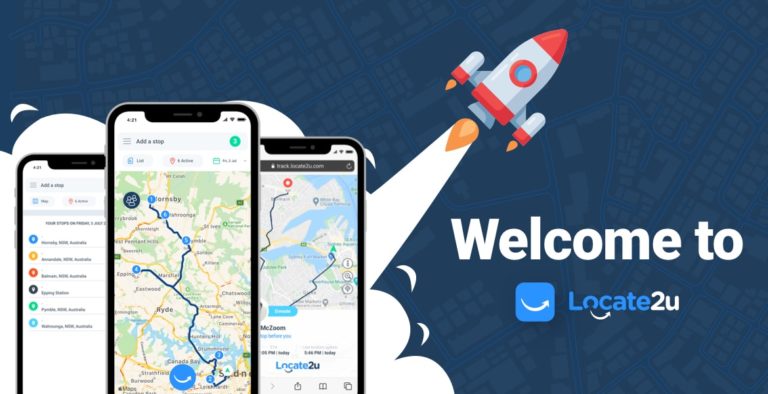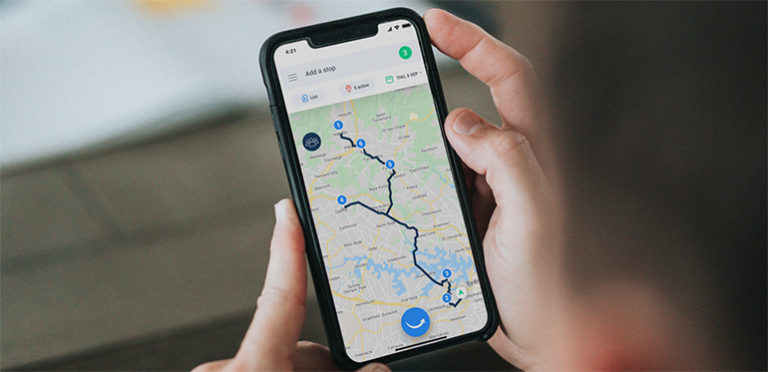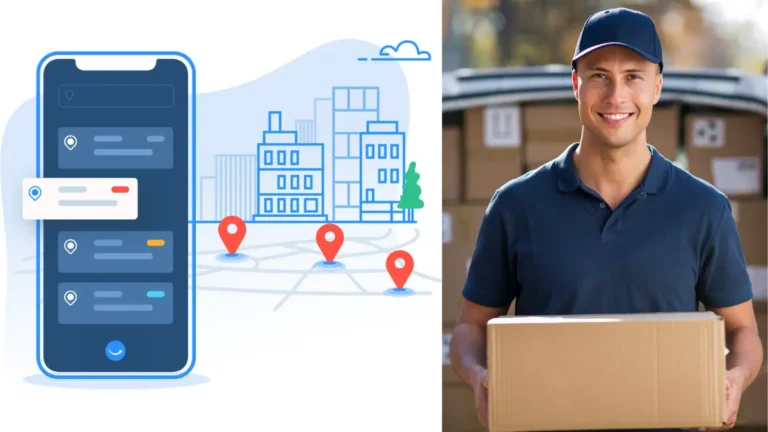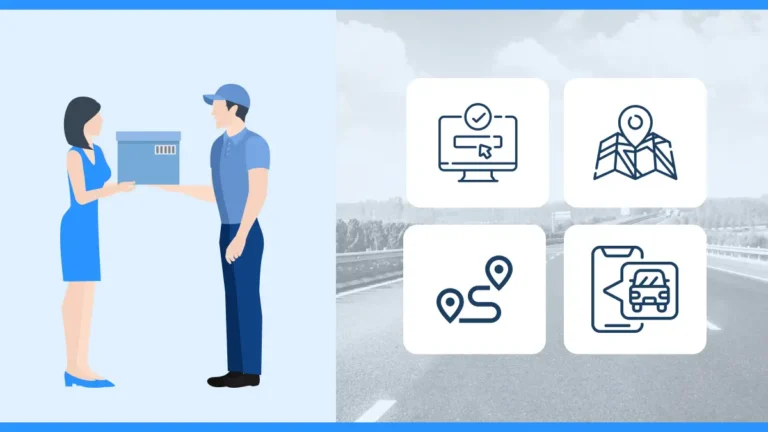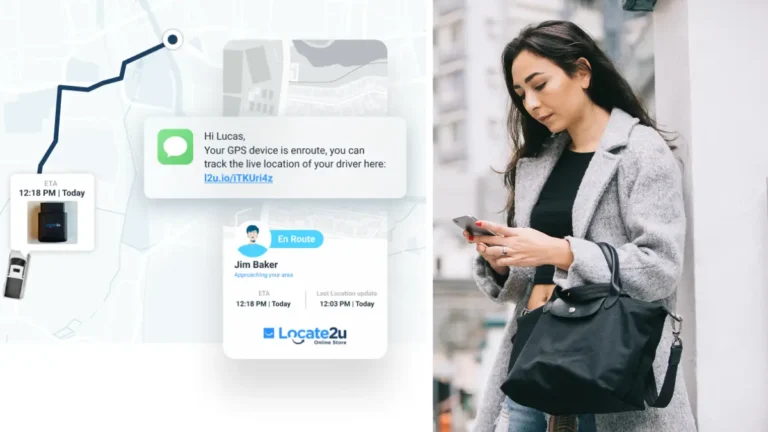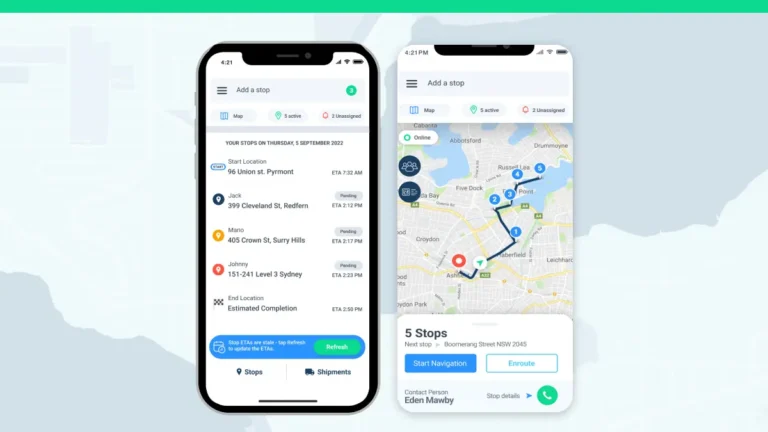You’re the manager of a bustling furniture delivery company, juggling multiple trucks and routes every day.
The phone rings non-stop with customers asking, “Where’s my couch?” Your drivers are texting you for directions, one truck is stuck in traffic, and you’re wondering whether another driver stopped for a long “lunch break.”
Now, wouldn’t it be great to have eyes on all of this in real-time, at the touch of a button? That’s exactly what GPS tracking software can do for you.
In this guide, we’re going to break down GPS tracking software, why you need it, and how it integrates with delivery management tools to simplify your logistics operations.
Whether you’re delivering fine dining meals across town or managing a fleet of trucks transporting bedroom sets, GPS tracking software is the superhero cape your business needs for effective fleet tracking.
How GPS tracking works
Ever wondered how GPS tracking works? It all starts with a network of satellites orbiting the Earth.
These satellites send signals to GPS tracking devices, also known as GPS trackers, which use this information to pinpoint their exact location, speed, and direction of travel. Think of it as a digital compass that’s always accurate.
Here’s the cool part: GPS tracking devices don’t just rely on satellites. They also use cellular and Wi-Fi technologies to ensure you get the most accurate and reliable location data possible.
Whether installed in vehicles, attached to assets, or even worn by individuals, these versatile devices keep you in the loop.
Here’s a quick rundown of how it all works:
- Receiving signals: GPS trackers receive signals from a network of satellites.
- Determining location: The device calculates its exact location, speed, and direction based on these signals.
- Transmitting data: This location data is then sent to a server using cellular or Wi-Fi connectivity.
- Real-time viewing: The server processes the data, making it available for real-time viewing through fleet management software.
With this technology, you can keep an eye on your fleet’s every move, ensuring efficiency and control at all times.
Here’s a tip:
Using GPS tracking software helps you avoid common headaches, like late deliveries, lost drivers, or those “I’m almost there” texts when they’re still miles away.
Why is GPS tracking software a must for your business?
Let’s cut to the chase—do you need GPS tracking software? Yes, absolutely.
If you’re still managing your fleet with phone calls and guesswork, you’re missing out on huge opportunities for efficiency that fleet management solutions can provide. Let’s walk through some reasons why GPS tracking software is your new best friend:
Real-time visibility = Real control
When you know where your drivers are with real time vehicle tracking, you have control. No more guessing if a driver is stuck in traffic or off route. With real-time visibility, you can monitor, manage, and adjust on the fly, keeping customers happy and delivery times precise.
Save money on fuel and maintenance
Want to cut costs? GPS tracking software helps you optimize routes, which means less fuel wasted on detours or idle time. Plus, it can help track vehicle maintenance needs before they become costly repairs. Think of it as preventative care for your fleet.

Boost customer satisfaction
Customers don’t want to wait. They want to know where their delivery is and when it’s arriving. With GPS tracking, you can provide accurate delivery times, and some systems even allow customers to track their own deliveries. Happy customers mean repeat business.
Improve driver accountability
We’ve all been there—wondering if your drivers are really as efficient as they claim. GPS tracking allows you to monitor speed, idle time, unauthorized stops, and driver safety. With this tool, drivers are more likely to stay on task, knowing there’s a virtual eye in the sky.
Plan smarter routes
Using GPS data, you can see traffic patterns, bottlenecks, and the best routes. Whether it’s avoiding construction or sending drivers on the most fuel-efficient route, GPS tracking software makes route optimization a breeze.
GPS tracking software + Delivery management systems
GPS tracking software doesn’t just operate in a vacuum. It often works hand-in-hand with delivery management systems (DMS). So, what’s the difference, and why should you care?
A delivery management system is like your operations hub. It schedules, routes, and monitors the entire delivery process. GPS tracking enhances the DMS by adding real-time visibility. Together, they offer a powerful solution to manage deliveries from start to finish.
Picture this: You own a small chain of restaurants offering food delivery. On a busy Friday night, orders are coming in fast.
Your delivery management software schedules the routes, but thanks to GPS tracking and vehicle tracking software, you notice one driver is about to hit traffic. You reroute them, ensuring they avoid delays and keep customers happy.
Without GPS tracking, you’d be flying blind and risk losing business due to late deliveries.
Asset tracking and management: Tool for success
In the world of fleet management, keeping tabs on your assets is crucial. Whether it’s vehicles, equipment, or other valuable items, knowing their whereabouts and status can make or break your operations. That’s where GPS tracking devices come into play.
By equipping your assets with GPS trackers, you gain real-time insights into their location and movement. Imagine being able to see where your equipment is at any given moment or receiving an alert if a vehicle leaves a designated area. This level of visibility is a game-changer.
Here’s how asset tracking and management can benefit your business:
- Real-time monitoring: Keep track of asset location and movement in real-time.
- Alerts and notifications: Receive instant alerts when assets move or enter/exit specific locations.
- Performance metrics: Track usage and performance metrics like fuel consumption and maintenance costs.
- Optimized utilization: Ensure your assets are being used efficiently, reducing downtime.
- Enhanced security: Improve asset security and reduce the risk of theft or loss.
With GPS tracking, you can manage your assets more effectively, ensuring they’re always where they need to be and performing at their best.
How GPS fleet tracking improves fleet safety
Beyond improving operational efficiency, GPS tracking also plays a significant role in fleet safety.
The reality is: Delivery drivers are often under pressure to hit tight deadlines, which can sometimes lead to unsafe driving practices.
Vehicle tracking systems help monitor speed, harsh braking, and acceleration, ensuring your drivers are following safe driving behaviors.
The myth of the “perfect” driver
Let’s burst a bubble here: there’s no such thing as a perfect driver. Even the best drivers have days where they miss a turn, idle for too long, or take a detour for coffee. And hey, they’re human. But your business? It can’t afford “off days.”
That’s where GPS tracking becomes the ultimate backup plan. It’s not about babysitting your drivers—it’s about giving them (and you) the tools to be better. The myth of the “perfect” driver doesn’t need to exist when you’ve got a system that keeps everyone on track—literally.

How to choose the right GPS tracking software for your business
Not all GPS tracking systems are created equal. Here are some things to consider when choosing the right one for your business:
1. Real-time tracking features
Ensure the software provides real-time tracking and updates. Delays in data could lead to inefficiencies and missed opportunities.
2. Scalability
Look for software that can grow with your business. If you plan to add more vehicles to your fleet, make sure the system can scale accordingly.
3. User-friendly interface
The best GPS tracking software is intuitive and easy to use. You don’t want to spend hours figuring out how to navigate the platform.
4. Integration with existing systems
If you’re already using a delivery management system, choose GPS tracking software that integrates seamlessly. This will save you from dealing with compatibility headaches.
5. Customer support
Good customer support is crucial. Choose a provider with a strong track record of helping businesses set up and troubleshoot their systems.
What’s the return on investment?
When considering GPS tracking solutions, cost is a significant factor. However, the return on investment (ROI) can be substantial. Here’s why:
- Fuel Savings: Optimize routes and reduce unnecessary driving, leading to lower fuel consumption and costs.
- Maintenance Savings: Track vehicle maintenance needs proactively, reducing the risk of costly repairs and downtime.
- Increased Productivity: Improve efficiency and reduce labor costs by monitoring driver performance and optimizing routes.
- Enhanced Safety: Promote safer driving behaviors, reducing the risk of accidents and associated costs.
- Asset Utilization: Ensure your assets are used efficiently, minimizing downtime and maximizing productivity.
GPS tracking in action: A day in the life of a logistics manager
You are a logistics manager for a medium-sized restaurant chain. Your job is to make sure every delivery is on time, every time. Before GPS tracking, you were constantly on the phone with drivers, trying to figure out where they were and when they’d arrive. It was chaos.
Now, with GPS fleet tracking software, your life is a lot easier. You can see all her drivers on a single map, reroute them as needed, and even get alerts if a driver is speeding.
Your customer satisfaction rates have skyrocketed, and your stress level? Well, let’s just say you’re sleeping better at night.
GPS tracking: The secret weapon your competitors are already using
Okay, time to get real for a moment. If you’re still relying on phone calls, spreadsheets, or a gut feeling to manage your fleet, you’re already behind. Right now, your competitors—yes, even that furniture delivery company down the street—are harnessing GPS tracking like a stealthy, digital ninja, and reaping the rewards.
Now, this isn’t to scare you—it’s a wake-up call! GPS tracking is no longer some futuristic tech, it’s today’s competitive advantage. A GPS tracker can improve productivity, provide real-time updates, and reduce costs for businesses across various industries.
And those companies? They’re already using it to shave off delivery times, cut fuel costs, and woo customers. If you don’t get on board soon, you’ll be playing catch-up.
The real secret behind happy customers (Hint: It’s not just the product)
Ever wonder why certain businesses have raving fans? Sure, it’s about delivering a great product, but let’s not forget about how you deliver it. Customers value punctuality, reliability, and the assurance that their stuff won’t get lost on the way.
GPS tracking is the unsung hero of great customer service. It’s the invisible force behind your ability to consistently deliver on time, every time. And when customers know they can trust you, they’re more likely to stick around.
5 Quick tips to know when you need GPS tracking
Not sure if GPS tracking software is what your business needs? Here are five quick ways to tell if it’s time to invest:
1. You have more than a few vehicles on the road
If you’re managing more than three delivery vehicles, it’s tough to keep track of where everyone is at once. GPS tracking is a no-brainer.
2. You’re fielding “where’s my order?” calls daily
Constant customer inquiries about delivery times are a sign that your tracking is lacking. GPS tracking keeps you in the loop and helps you communicate better with customers.
3. Your fuel costs keep going up
If your fuel costs are rising faster than expected, GPS tracking can help you identify inefficiencies in routes and reduce unnecessary driving.
4. You’re not sure what your drivers are doing
If you’re not confident about your drivers’ productivity, vehicle tracking offers the accountability and transparency you need to monitor their movements.
5. You’re struggling to manage deliveries at peak times
If peak times stress you out because of late deliveries, missed stops, or lost drivers, GPS tracking can help streamline your operations.
Locate2u has GPS tracking software that can help you track the live location of your vehicles and assets, giving you full visibility of your delivery operations.

Let’s recap: Why you should invest in GPS tracking software
So, what’s the takeaway here? GPS tracking software isn’t just a luxury for logistics businesses—it’s a necessity.
It saves time, cuts costs, improves customer satisfaction, and keeps your drivers accountable. If you want to take your business to the next level or even start your own GPS tracking business, GPS tracking software is the way to do it.
Here’s a final tip:
Invest in a GPS tracking system that fits your specific needs. Don’t just go for the flashiest option—choose a tool that will integrate seamlessly with your existing processes and provide the data that’s most important to you.
NOW READ: Supply chains: The rise of nearshoring in the Americas
Photo Credit: Canva
About the author
Sharl is a qualified journalist. He has over 10 years’ experience in the media industry, including positions as an editor of a magazine and Business Editor of a daily newspaper. Sharl also has experience in logistics specifically operations, where he worked with global food aid organisations distributing food into Africa. Sharl enjoys writing business stories and human interest pieces.

